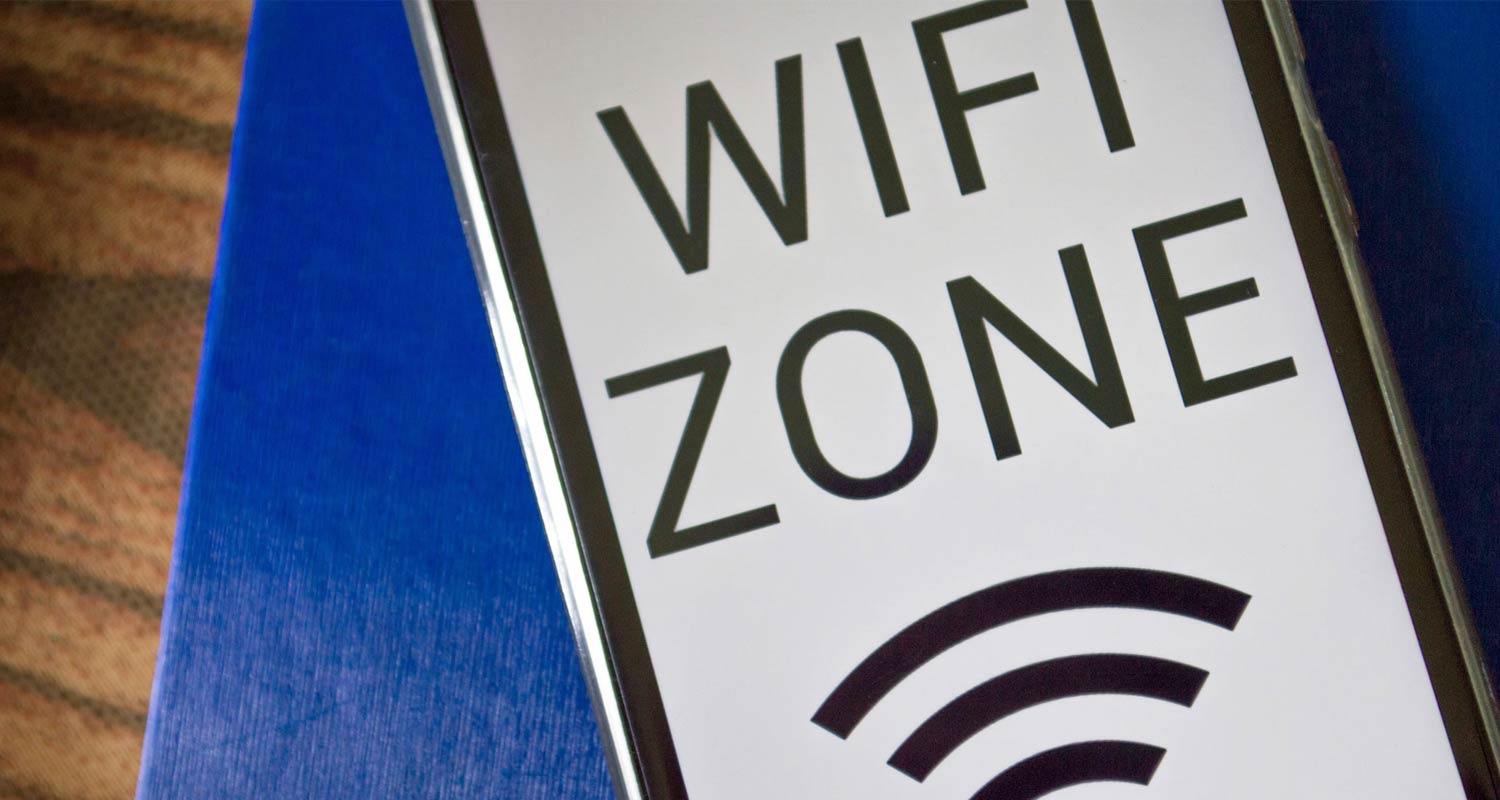Wi-Fi is evolving to meet the demands of increased connectivity, higher speeds, better security, the growing number of devices connected to the internet and a greater focus on energy efficiency.
The industry itself has reached a pivotal moment. As demand for improved Wi-Fi user experience with seamless, secure and high-performance connectivity continues to surge across homes, enterprises and cities, collaboration within our ecosystem is more critical than ever.
Here are 10 predictions for the Wi-Fi space for 2025 – and beyond.
1. Wi-Fi 7 adoption
Early adopters of Wi-Fi 7 will include technology-driven industries, smart home enthusiasts and enterprises needing high-density, high-speed connectivity. Large tech companies and advanced enterprises will be among the first to implement Wi-Fi 7 in their office infrastructures to support increased demands from remote collaboration tools, IoT sensors and high-definition videoconferencing.
Smart cities will also lead the charge, adopting Wi-Fi 7 to enable real-time data collection from IoT devices for traffic management, public safety and environmental monitoring. Public venues like stadiums, airports and convention centres will adopt Wi-Fi 7 early to manage the connectivity needs of thousands of simultaneous users, providing seamless streaming and data access for fans, travellers and attendees.
Within the consumer sector, tech-savvy users and smart home aficionados will upgrade to Wi-Fi 7 routers to maximise the performance of their growing array of connected devices, such as smart appliances, security systems, and entertainment systems for 8K streaming and gaming.
2. 6GHz expansion and AFC
AFC (automated frequency coordination) systems will see phased roll-outs across multiple regions, particularly in the US, Canada, the EU and parts of Asia, as regulators increasingly approve 6GHz use for unlicensed Wi-Fi under AFC management. In the US, the Federal Communications Commission will lead AFC implementation for standard-power Wi-Fi operations in the 6GHz band, with licensed database administrators managing these AFC systems.
Following the US model, other countries are anticipated to adopt similar AFC frameworks, accelerating deployment in enterprise and public spaces by ensuring devices can operate at standard power levels in outdoor or high-traffic areas without compromising incumbent communications.
Read: Wi-Fi 7 is here – just how fast is it?
In Canada, AFC approval by regulatory bodies will drive adoption in urban areas and suburban networks, supporting widespread use in places like shopping centres, airports and sports venues. In Europe, the European Telecommunications Standards Institute (Etsi) will likely coordinate region-specific AFC guidelines, balancing connectivity needs with incumbent protections.
 3. AI-driven network optimisation
3. AI-driven network optimisation
AI-powered routers and cloud platforms will analyse traffic patterns, adjust bandwidth allocation and manage devices for optimal performance, particularly in smart homes and IoT-heavy environments. As hardware becomes increasingly commoditised, infrastructure vendors create their respective secret sauces to innovate and differentiate.
4. Wi-Fi and 5G convergence
The convergence of 5G/6G and Wi-Fi will ensure seamless, high-quality connectivity by dynamically switching between the best available networks. In a smart city, for example, a person moving from a Wi-Fi-rich office to a 5G-powered urban area will experience uninterrupted service, thanks to technologies like OpenRoaming and Passpoint, which enable secure, automatic connections to trusted Wi-Fi networks.
5G’s network slicing further enhances this by dedicating specific network resources to applications like AR/VR and real-time gaming, which can integrate smoothly with Wi-Fi.
As enterprises and industries drive this convergence, 6G will add features like terahertz frequencies for nearly instant communication over wide and local areas. Edge computing, which processes data closer to its source to reduce latency, will leverage both Wi-Fi and 5G/6G to offload tasks to the best network, optimising real-time performance. Wi-Fi will dominate high-density areas like offices, while 5G/6G will enable broad IoT deployments, paving the way for innovations like smart cities and autonomous vehicles reliant on robust, ubiquitous connectivity.
5. OpenRoaming
2025 will continue to see an acceleration for OpenRoaming as global adoption continues to grow. Moving forward on the vision to transform the public and guest Wi-Fi user experience, and changing the way we connect to Wi-Fi, from remote communities, to universities, stadiums, retail chains, large city deployments and more.
OpenRoaming capabilities are extending into the IoT space, with zero-touch provisioning of IoT devices, emergency calling and response and private cellular networks. At same time, OpenRoaming expands the opportunity for mobile network operators and mobile virtual network operators to incorporate Wi-Fi as part of their wireless solutions to expand capacity and/or coverage, in particular for indoor scenarios.
 6. TIP OpenWiFi
6. TIP OpenWiFi
TIP OpenWiFi adoption is projected to continue expanding, though the pace will likely be uneven across sectors and regions. The introduction of OpenLAN switching is expected to stimulate growth, particularly in cost-sensitive markets like India and among managed service providers in the US and Europe looking for alternative, flexible networking solutions. However, TIP OpenWiFi’s success will hinge on its ability to navigate challenges in scaling deployments and building credibility against established wireless LAN providers, who have aggressively invested in AI-driven performance enhancements and customisable features that make their offerings more compelling for enterprise-level CIOs and CTOs.
7. Increased IoT device connectivity
As the number of IoT devices continues to grow, Wi-Fi networks will be optimised to handle large-scale device connections. Wi-Fi 6 and Wi-Fi 7’s ability to manage more simultaneous devices will become crucial in supporting smart homes, IoT and smart cities. Furthermore, the Wi-Fi HaLow standard will develop as a disruptive connectivity technology for IoT, with the potential to transform the IoT landscape. With its extensive range, superior penetration and enhanced battery life, Wi-Fi HaLow is poised to revolutionise industries, including agriculture, smart cities and manufacturing, improving efficiency and data collection. Wi-Fi HaLow is ready for primetime in the IoT ecosystem and is a natural fit, especially for long-range, intelligent applications.
8. API first
The API-first strategy has transitioned from a progressive concept to a fundamental practice. Wi-Fi vendors are now building applications with APIs as the primary focus, ensuring that integration, scalability and future growth are baked into the DNA of their digital solutions. This approach highlights the critical role of APIs in creating flexible, adaptable and robust digital architectures. While using APIs provides a log of great flexibility and potential, every API integration project is inherently unique. Usually, a single integration build will take engineers at least several weeks. Once it’s built, engineers will likely need to allocate several hours per month to maintain the integration.
 9. Public Wi-Fi
9. Public Wi-Fi
Public Wi-Fi networks will be driven by smart city initiatives, offering free or low-cost connectivity in urban areas. These networks will support everything from smart transportation systems to energy management and public safety. OpenRoaming is set to play a pivotal role in the expansion of public and smart city Wi-Fi networks. For smart cities like Tokyo, Barcelona and others, this seamless transition between networks enables reliable, continuous connectivity for citizens and devices alike, supporting applications such as real-time traffic monitoring, public safety systems and IoT-based services. Municipalities and public Wi-Fi providers will likely prioritise OpenRoaming to enhance user experience, simplify network management and foster more data-rich urban environments.
10. Energy efficiency
Wi-Fi networks will prioritise energy efficiency, particularly for IoT devices requiring long battery life. Technologies such as Target Wake Time (TWT) will become more prevalent, reducing power consumption in connected devices by allowing them to schedule check-ins with the network.
- The author, Tiago Rodrigues, is president and CEO of the Wireless Broadband Alliance


